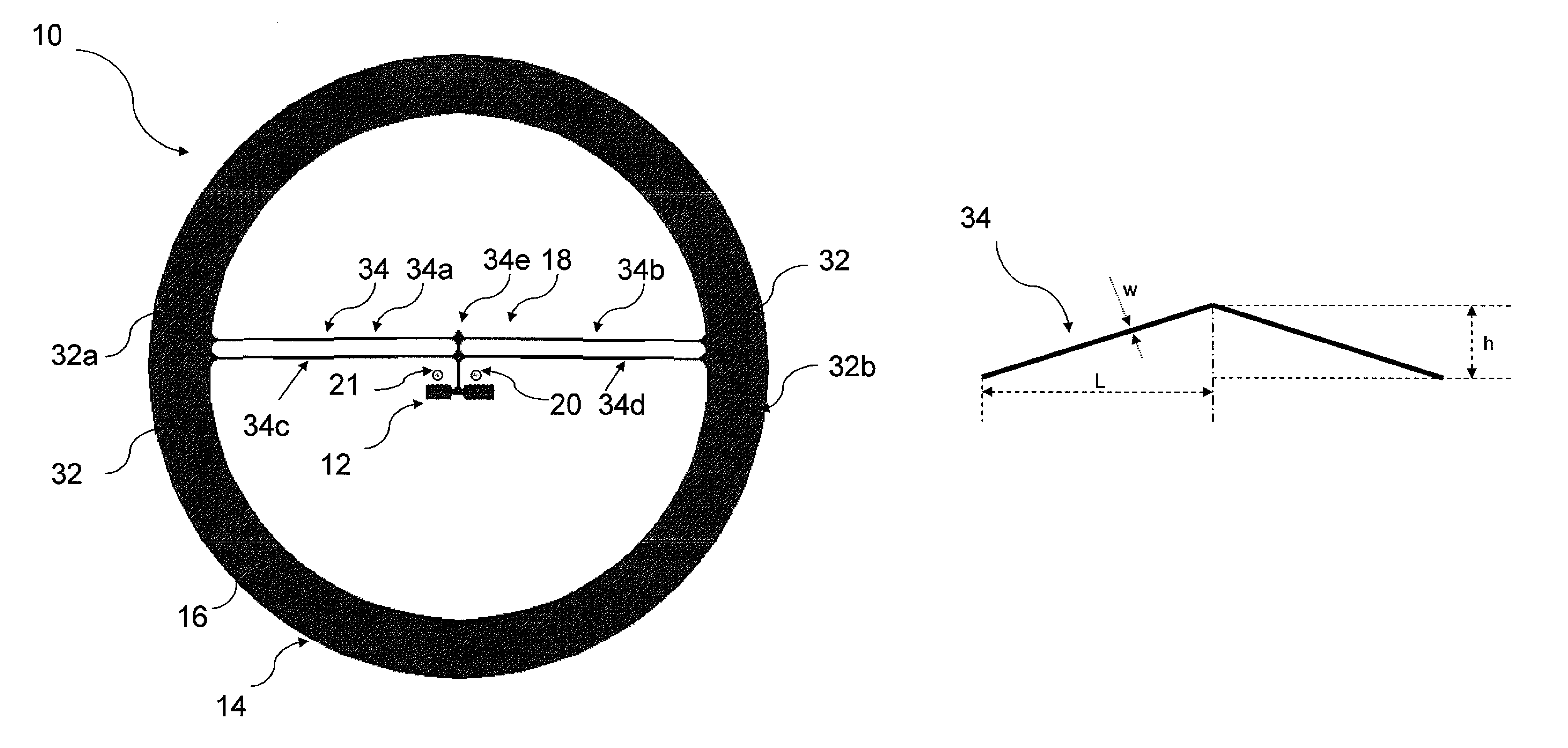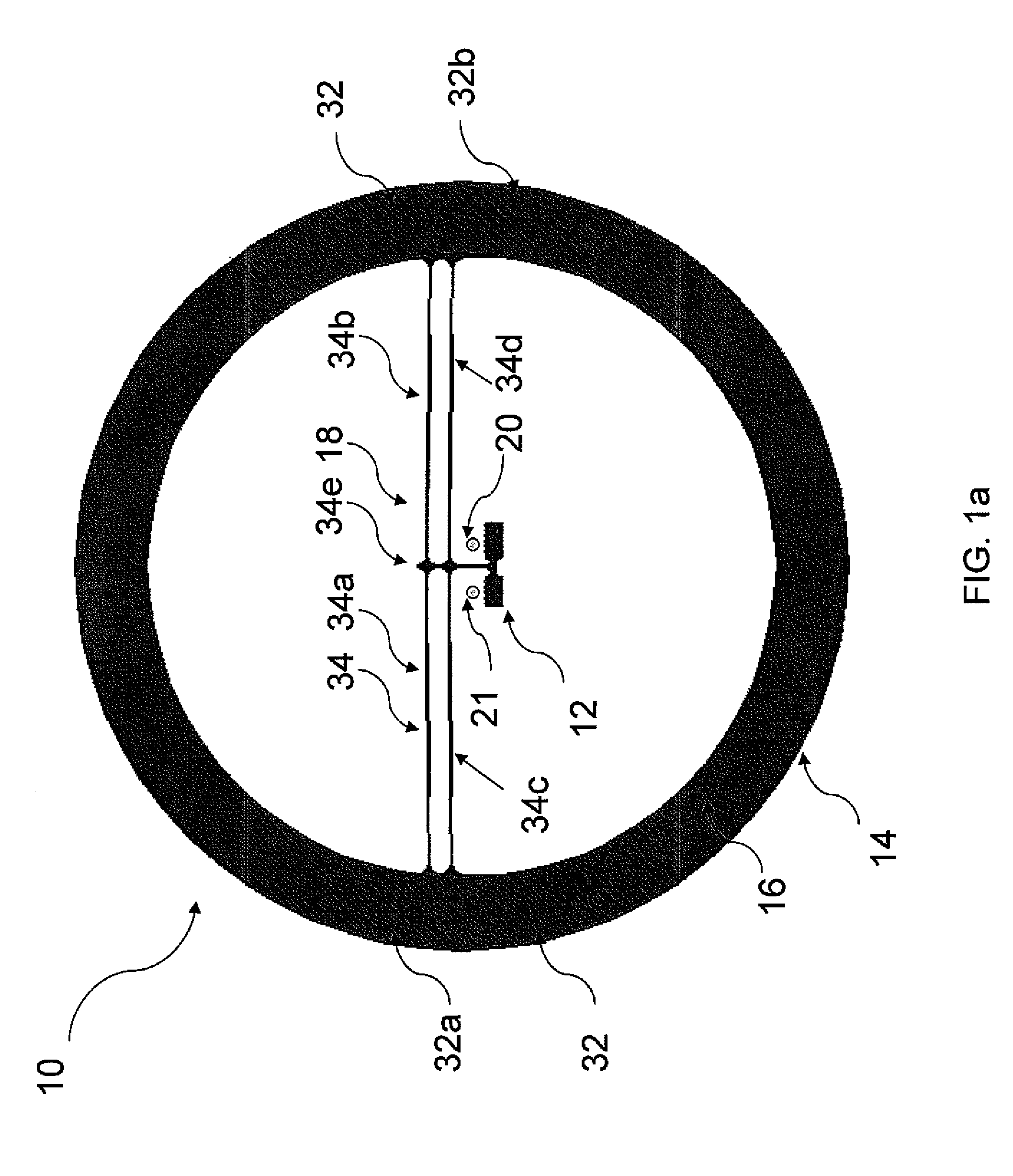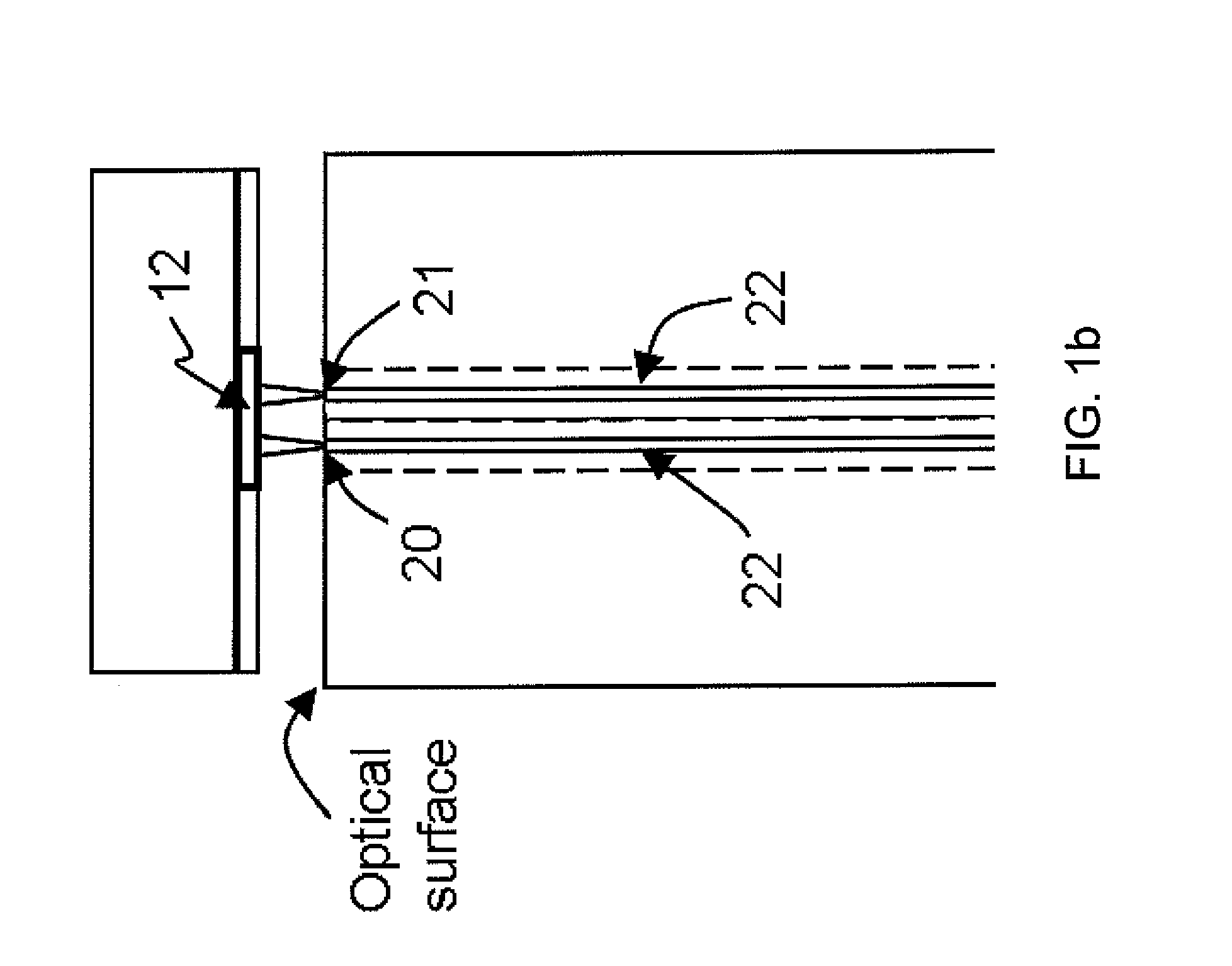Compact thermal actuated variable optical attenuator
a variable optical attenuator and thermal actuator technology, applied in the field of compact thermal actuator variable optical attenuator, can solve the problems of large size, large thermal structure response time, and expensive hermetic packaging, and achieve the effect of improving the optical shutter
- Summary
- Abstract
- Description
- Claims
- Application Information
AI Technical Summary
Benefits of technology
Problems solved by technology
Method used
Image
Examples
Embodiment Construction
[0028]A detailed description of a MEMS variable optical attenuator (VOA) in accordance with various embodiments of the present invention will be given below with reference to the accompanying drawings.
[0029]FIG. 1a illustrates a schematic view of an embodiment of a MEMS variable optical attenuator 10 in which an optical shutter 12 is utilized in accordance with one embodiment of these teachings.
[0030]More specifically, the MEMS variable optical attenuator (VOA) or VOA chip 10 includes a substrate 14 (embodiments in which the VOA chip is lifted from the substrate are also within the scope of these teachings) having a planar surface frame 16, a micro-electric actuator 18 arranged on the planar surface 16 of the substrate 14, and optically aligned with each other while being arranged against the planar surface 16, an optical shutter 12 movable to a predetermined position over the receiving optical port 20 or the transmitting optical port 21 (in one instance, as shown in FIG. 1b, the op...
PUM
| Property | Measurement | Unit |
|---|---|---|
| temperature | aaaaa | aaaaa |
| area | aaaaa | aaaaa |
| width | aaaaa | aaaaa |
Abstract
Description
Claims
Application Information
 Login to View More
Login to View More - R&D
- Intellectual Property
- Life Sciences
- Materials
- Tech Scout
- Unparalleled Data Quality
- Higher Quality Content
- 60% Fewer Hallucinations
Browse by: Latest US Patents, China's latest patents, Technical Efficacy Thesaurus, Application Domain, Technology Topic, Popular Technical Reports.
© 2025 PatSnap. All rights reserved.Legal|Privacy policy|Modern Slavery Act Transparency Statement|Sitemap|About US| Contact US: help@patsnap.com



